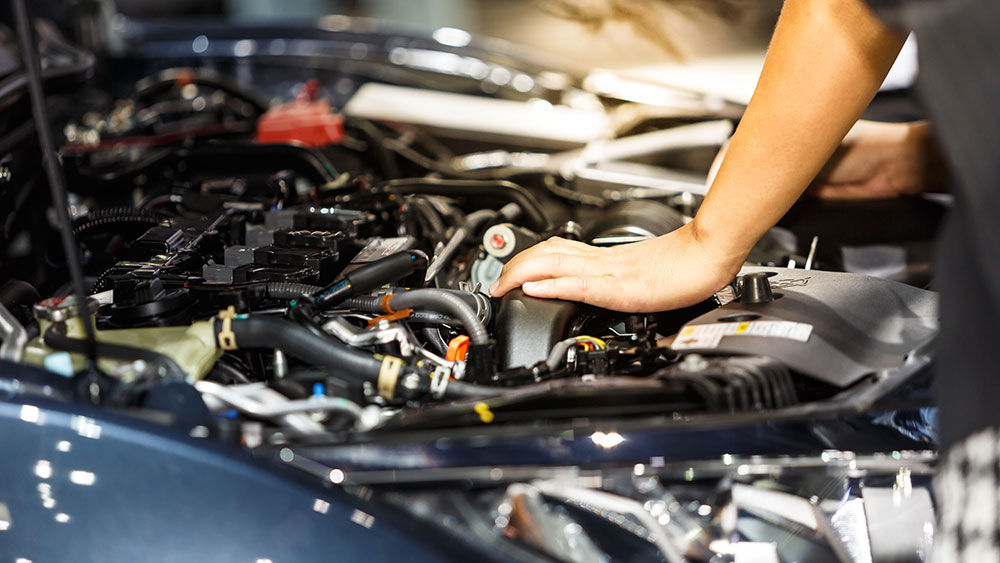HOW TO REPAIR YOUR OWN CAR WITHOUT EXPERIENCE

1
Purchase a comprehensive toolkit for basic car repairs. Nothing is more of a pain than being elbow-deep in grease and realizing you need a cheap tool you don’t have. Some back and forth is inevitable with car repairs, but gathering a few basic tools can prevent a lot of this. Socket wrenches, screwdrivers, wrenches, pliers, jacks, penetrating oil, and a rubber mallet are some tools that will help you get through most common issues.Keep in mind what repair you need to make. If you’re changing a fuse, for instance, you will need to buy a new fuse. If you’re changing the oil, you need an oil pan.
Check with your local auto parts store to see what kind of tool rental program they have. These programs provide a way to borrow expensive tools without having to buy them.
2
Get an automobile manual to guide you through repairs. Haynes and Chilton are a couple of print manuals you may find useful. Even the pros use these manuals to perform repairs. They are beginner-friendly, unlike dealer service manuals. Get a manual specifically made for the car you are trying to repair.You can order a manual online or from most auto parts stores.
Read the manual’s cover to find what make and model of car it is for. For instance, it will say something like “BMW 3-series 2008 through 2012.”
You can also search online for manufacturer repair manuals. Type the make and model of your car followed by the words “repair manual.” These manuals may be a little more challenging to understand than the print manuals, so be cautious.
3
Search for repair videos and discussions online for assistance. Thanks to the Internet, car repair resources are very accessible. You will probably find quite a few videos of people going through the repair process, which can help you learn about parts and tools or figure out what steps you need to take to complete a repair.Many videos are made by amateur car enthusiasts. They may not have much experience or professional training. Make sure you reference videos with official resources like a repair manual.
4
Fill out and keep a maintenance record as you work on your car. Keep a list detailing the type of work done on the car, a description of what was done, and an indication of when the repair happened? Save any receipts for materials you buy. Dealers and warranty providers often require maintenance records, but keeping a record can also help you track your own work.You can purchase a printed maintenance card at an auto parts store or make your own in a notebook. Store the log in your car’s glove compartment so you always have it.
5
Take pictures of your car parts so you know how to put them back. Instructions like “replace the peripheral flange bracket” are useless to you if you can’t remember how the bracket came off. To make things easier, develop a system for your parts. Make notes or take a picture with a camera or your phone before you remove them. Then, as you set them aside, keep them ordered the same way you removed them.Try marking the parts with a tag or something like nail polish to indicate alignment.
Store parts in a safe spot, such as in plastic bags on a workbench.
6
Inspect your car for routine maintenance every 3,000 mi (4,800 km). As long as you operate your car, you can expect it to require periodic fixes. Give your car a total inspection on occasion to look for any dirty or damaged components. Then, replace these as soon as possible to keep your car in working order.Check your owner’s manual for a recommended repair schedule. It will list how long each part lasts, but remember that these are only estimates. Frequent inspections are a more accurate way of determining when a car needs repairs.
For example, oil and oil filters should be replaced about every 3,000 mi (4,800 km). Check batteries, fluids, and hoses at this point as well.
Replace air filters about every 12,000 mi (19,000 km), along with components like power steering fluid. Inspect the brake pads, suspension, and similar components for damage.
Most other components will last at least 35,000 mi (56,000 km). This includes the battery, spark plugs, fuses, and tires.
7
Perform maintenance on your car if you notice leaks or other problems. If something seems wrong, inspect it right away! Letting a problem go can lead to more extensive damage. Look and listen for issues while driving the vehicle. A rattling noise may be a sign of loose nuts or bolts while grinding can be the brake pads, for instance.The check engine light should not be taken lightly. If it comes on, inspect your car as soon as possible.
Use your car’s symptoms to diagnose your car. If your car lacks power, you know it is likely an issue with the electrical system, such as a dead battery or blown fuse.
Get a diagnostic reader to easily locate problems. Auto part store employees have these and will even rent them to you. You can also buy your own online.
